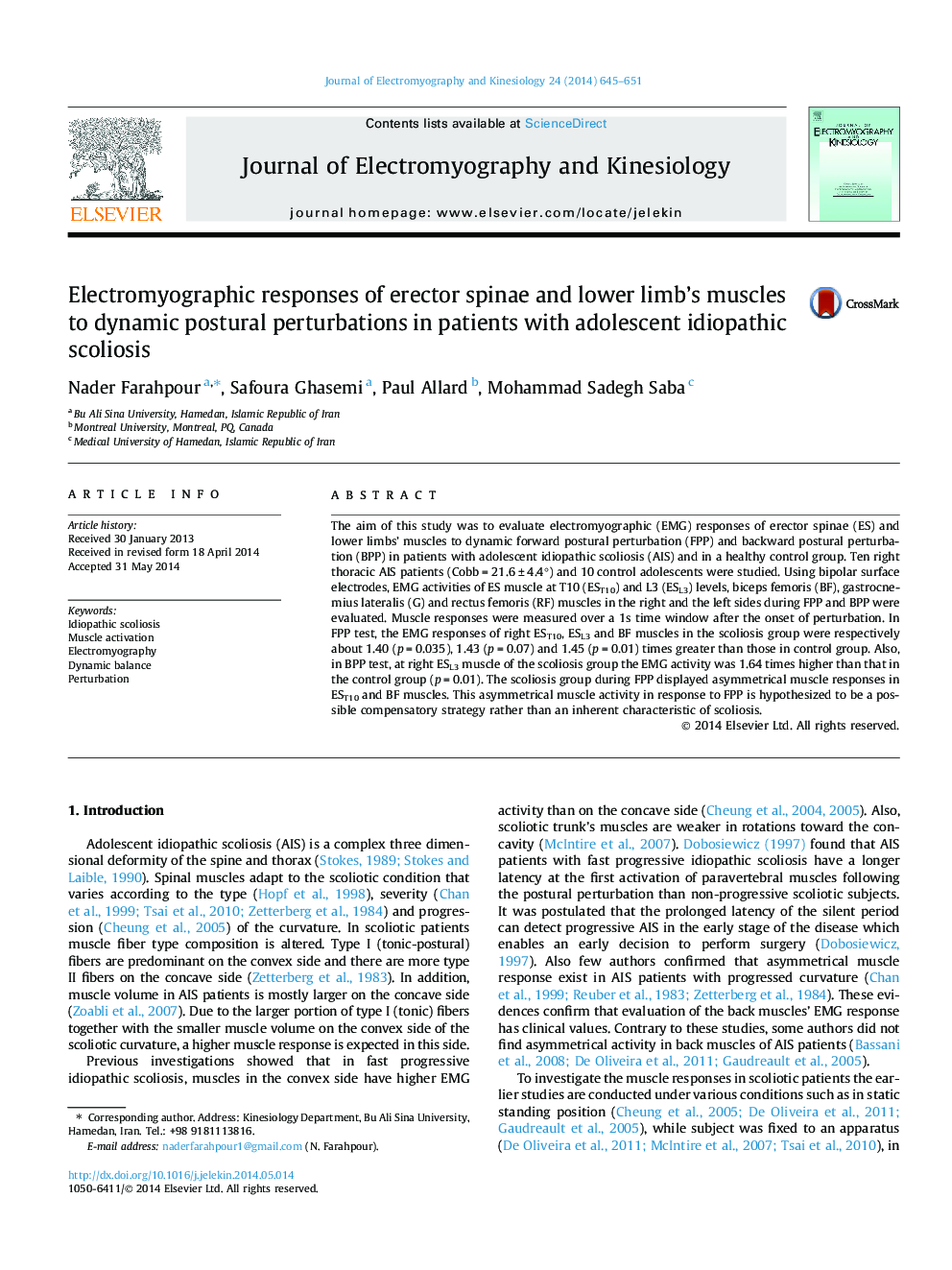| Article ID | Journal | Published Year | Pages | File Type |
|---|---|---|---|---|
| 4064560 | Journal of Electromyography and Kinesiology | 2014 | 7 Pages |
The aim of this study was to evaluate electromyographic (EMG) responses of erector spinae (ES) and lower limbs’ muscles to dynamic forward postural perturbation (FPP) and backward postural perturbation (BPP) in patients with adolescent idiopathic scoliosis (AIS) and in a healthy control group. Ten right thoracic AIS patients (Cobb = 21.6 ± 4.4°) and 10 control adolescents were studied. Using bipolar surface electrodes, EMG activities of ES muscle at T10 (EST10) and L3 (ESL3) levels, biceps femoris (BF), gastrocnemius lateralis (G) and rectus femoris (RF) muscles in the right and the left sides during FPP and BPP were evaluated. Muscle responses were measured over a 1s time window after the onset of perturbation. In FPP test, the EMG responses of right EST10, ESL3 and BF muscles in the scoliosis group were respectively about 1.40 (p = 0.035), 1.43 (p = 0.07) and 1.45 (p = 0.01) times greater than those in control group. Also, in BPP test, at right ESL3 muscle of the scoliosis group the EMG activity was 1.64 times higher than that in the control group (p = 0.01). The scoliosis group during FPP displayed asymmetrical muscle responses in EST10 and BF muscles. This asymmetrical muscle activity in response to FPP is hypothesized to be a possible compensatory strategy rather than an inherent characteristic of scoliosis.
